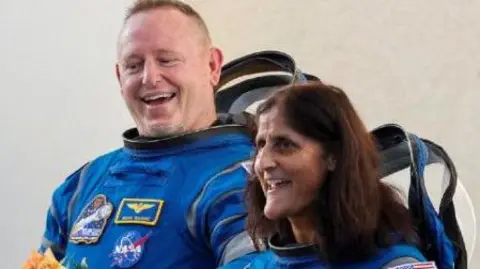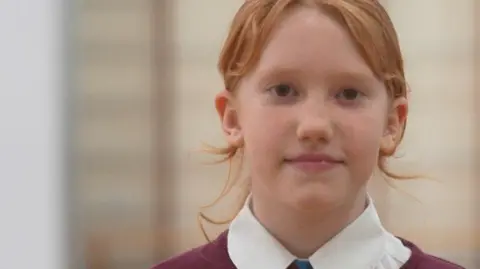A group of children questioned an astronaut about watching TV in space, her favourite places to fly over and whether time is different up there.
Pupils at Robert Drake Primary School in Thundersley, Essex spoke to Sunita Williams, 250 miles (400km) above Earth on the International Space Station (ISS).
The school's head of science Hanna Simpkin said they were "really excited" to be given the opportunity.
She said: "It's really important especially for the girls. It's really nice that we've got a female astronaut as well".
The youngsters put 15 questions to Ms Williams and were keen to know what you needed to learn to become an astronaut.
Ms Williams travelled to the ISS with Barry Wilmore on 5 June for an eight-day mission, but problems with the Boeing Starliner spacecraft means they will not be able to return to Earth until February 2025.
 Reuters
ReutersWhile the amateur radio on the ISS conducts between 60 and 100 radio contacts across the globe a year, it is not guaranteed that the connection will hold.
Before the call began, 11-year-old Leonardo said it was "really nerve-racking and exciting at the same time" and Noah, 8, said he was "proud of himself" for speaking to the astronaut.
Meanwhile nine-year-old Olive was left inspired by the encounter.
"My dream job was originally to be an astronaut," she said.
"I think you have to work really hard, try experimenting on things and know a lot of calculations. I feel like it's made my hopes go bigger."
 Jamie Niblock/BBC
Jamie Niblock/BBCWhat is the International Space Station?
- The international space station can travel at 18,000 miles per hour (29,000km per hour)
- It covers five miles every second and orbits the Earth every 90 minutes
- Crews on the space station witness 16 sunrises and sunsets every day
- They have to exercise two times a day to mitigate the loss of muscle and bone mass
Follow Essex news on BBC Sounds, Facebook, Instagram and X.


Post a Comment